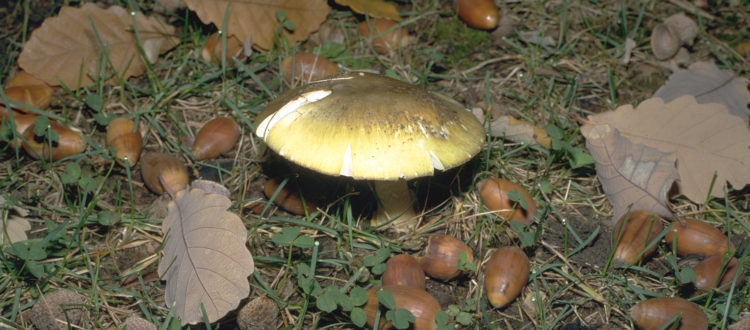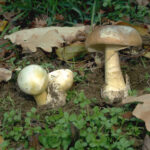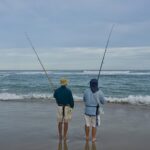
Wild mushrooms are ‘mushrooming’ around Australia this Autumn after wet weather, so today the Food Safety Information Council is warning people to be extremely careful around wild mushrooms because of the deadly, deathcap mushroom poisoning risk.
Cathy Moir, Food Safety Information Council Chair, said that foraging for wild food is becoming a popular activity, and is strongly promoted by influencers on social and conventional media, but gathering wild mushrooms can be life-threatening.
‘We are particularly concerned about this growing online promotion of mushroom foraging with some wild mushroom social media groups having over 40,000 members seeking to have their photos of mushrooms identified by fellow foragers. Apps and Google are not reliable to identify mushrooms accurately as they often only recognise Northern Hemisphere mushrooms and mushrooms change appearance during their growth cycle.
‘Deathcap mushrooms can appear at any time of year but are more common a week or two after good rains. They have been found in the Canberra region, in and around Melbourne, in Tasmania and in Adelaide growing in warm wet weather. They are not native to Australia and are often found near English oak trees. The similar native marbled deathcap mushrooms have been found in Western Australia, although they may not be as toxic. While no cases have been reported in other States it is possible that they also grow there.
‘Deathcap mushrooms are difficult to distinguish from some other wild mushrooms so we recommend you play it safe and only eat mushrooms that you have purchased from a supermarket, greengrocer or other reputable source. We recommend supporting local mushroom growers especially as they lost sales last year after extensive media coverage of alleged deathcap poisonings. Commercially produced mushrooms in Australia are grown in sterilized soils where wild mushrooms cannot grow as are commercial mushroom kits that you can purchase for growing at home (make sure you follow instructions to prevent accidental contamination by wild spores).
‘People born overseas, especially in European and Asian countries, should be aware that these deadly mushrooms can look like edible mushrooms they may have gathered in their home countries. The poison in the quarter of a cap of one deathcap mushroom, if eaten, is enough to kill a healthy adult. The toxin in deathcap mushrooms is not destroyed by peeling, cooking or drying. Symptoms of poisoning include vomiting, diarrhoea and stomach cramps and usually appear 10 to 16 hours after eating. These symptoms may ease for 2 to 3 days before a terminal phase of 3 to 4 days begins. Without early, effective medical intervention people may go into a coma and die after 2 or 3 weeks of liver and kidney failure.
‘While rare, most of the deaths from mushroom poisoning in Australia result from deathcap mushrooms. However, there are other wild mushrooms in Australia that have caused fatalities or can make you seriously ill with abdominal pain, vomiting and diarrhoea. These include the Cortinarius (webcap) and Galerina species, the ghost mushroom (commonly mistaken for oyster mushrooms), and the yellow stainer which resembles a field mushroom and is the most commonly ingested poisonous mushroom in Victoria and New South Wales.
‘Many accidental exposures to poisonous mushrooms are in children under 5 years; remember that small children have a natural inclination to put things in their mouths, especially if they are colourful and attractive. So, keep an eye on them when outdoors. Parents, school and childcare workers should regularly check outdoor areas and gardens for mushrooms and remove them to reduce the risk of them being eaten accidentally. This will also protect your pets.
‘If you suspect you or your child may have eaten a deathcap mushroom don’t wait for symptoms to occur but go to a hospital emergency department taking the mushroom with you if you can. You can also contact the Poisons Information Centre from anywhere in Australia on 13 11 26 (24 hours a day 7 days a week),’ Ms Moir concluded
Media contacts:
Lydia Buchtmann, Food Safety Information Council, 0407 626 688 or info@foodsafety.asn.au
Further information:
If you have concerns about possible wild mushroom poisoning contact the Poisons Information Centre on 13 11 26
ACT Health: If you think you see any possible Deathcap mushrooms growing in Canberra do not touch but report them contact Access Canberra on 13 22 81 see more information
Queensland see more information
Better Health Channel (Victorian Government) see more information
Australian National Botanic Gardens see more information
WA Health: see more information
Tasmania more information
Pets – Australian Animals Poisons Centre (AAPC) 1300 TOX PET (AU)



